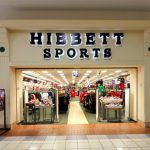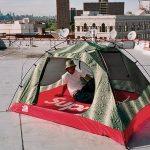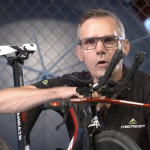Helen of Troy, Ltd. reported Hydro Flask’s sales in the fiscal third quarter ended November 30 continued to be impacted by cautious buying by retailers.
“Hydro Flask continues to hold its Number One position at our largest online retailer where sales almost doubled during the Black Friday and Cyber Monday period compared to the same period last year,” said Julien Mininberg, Helen of Troy’s CEO, on an analyst call. “This helped to offset the broader POS decline at brick and mortar in the quarter.”
In early October when it reported fiscal second-quarter results, Helen of Troy officials indicated that Hydro Flask’s sell-through grew “modestly” in the period and market share was “down slightly” in the year-to-date period as retailers grew more cautious about replenishment and orders stemming from concerns over a slowdown in consumer spending.
Noel Geoffroy, COO, on the third-quarter call said Hydro Flask is seeing a shift toward online channels.
“We see a lot more sales transitioning to online where we are performing very strongly,” he said., “I think that’s a function of shoppers to shifting more and more to online, especially for items like Hydro Flask.”
Mininberg added that growth at its largest online seller benefited from a shift from a third-party manager to a first-party relationship. The CEO said, “That made a big difference for us.”
Geoffroy added that Hydro Flask was also impacted by challenging year-ago comparisons. He added, “Over a two-year stack, we do see the brand growing and strong. And so, we still are very excited about Hydro Flask and its performance.”
Asked by an analyst whether Hydro Flask was gaining market share, Mininberg said Hydro Flask’s share is “roughly flat” versus about four years ago. He said, “There’s been some ups and downs along the way.”
Overall sales in the third quarter in the Home & Outdoor segment, which includes OXO, Hydro Flask and Osprey, declined 7.0 percent on a reported basis in the third quarter, to $228.9 million.
The decline was driven by a decrease from organic business of 23.3 percent, primarily due to declines in sales related to lower consumer demand driven by shifts in consumer spending patterns and reduced orders from retail customers due to higher trade inventory levels, the unfavorable comparative impact of earlier than typical customer orders in the third quarter of fiscal 2022 as retailers accelerated orders to try to avoid supply chain disruptions during the prior year holiday season, and lower sales in the club channel.
These factors were partially offset by higher sales in the closeout channel and the favorable impact of customer price increases related to rising freight and product costs.
The smaller decline on a reported versus organic basis reflects the contribution of $43.3 million from the acquisition of Osprey completed on December 30, 2021.
Among its other brands, Mininberg said OXO continues to see POS below peak prior year levels at brick & mortar as the overall home category continued to slow. He added, “Importantly, total POS for OXO remains solidly ahead of pre-pandemic levels as we focused on our marketing to introduce the brand to new consumers. OXO performed very well at our largest online retailer during the Black Friday and Cyber Monday period.”
Helen of Troy officials didn’t offer details on Osprey’s performance although Mininberg noted that all three Home & Outdoor brands performed above expectations internationally, with Osprey “doing very well in Europe.”
Operating income in the Home & Outdoor segment reached $30.8 million in the quarter, down 28.7 percent from $43.2 million a year ago.
Segment operating margin declined 4.1 percentage points to 17.6 percent of sales primarily due to the impact of the acquisition of Osprey, which has a lower operating margin than the rest of the Home & Outdoor segment, increased salary and wage costs, restructuring charges of $5.1 million, and unfavorable operating leverage. These factors were partially offset by reduced annual incentive compensation expense, a decrease in distribution expense, inflationary costs and related customer price increases, lower inventory obsolescence expense, and a more favorable customer mix. Adjusted operating income decreased 16.5 percent to $39.9 million, or to 17.4 percent of segment sales from 19.4 percent a year ago.
Helen of Troy’s other brands include Vicks, Braun, Honeywell, PUR, Hot Tools, and Drybar.
Helen of Troy’s overall results for the third quarter exceeded expectations, prompting the company to raise the bottom of its range for both sales and adjusted EPS. Sales guidance for the Home & Outdoor segment was slightly lowered.
Mininberg said, “Consumption remains soft in certain of our categories and some retailers are continuing to reduce their orders as they sell down their inventory. We are, however, encouraged to see trade inventory at some key retailers start to better align with sell-through, as well as stabilization and modest improvement in market share for certain categories such as Beauty appliances.”
The updated guidance calls for:
- Consolidated revenue in the range of $2.025 billion to $2.050 billion, which implies a decline of 8.9 percent to 7.8 percent, and a core business decline of 7.5 percent to 6.4 percent. (Previously, revenue was expected in the range of $2.00 billion to $2.05 billion, implying a decline of 10.0 percent to 7.8 percent and a core business decline of 8.6 percent to 6.4 percent.)
- Home & Outdoor sales growth of 2.5 percent to 3.5 percent; including net sales from Osprey of $180 million to $185 million. (Previously, growth of 3.5 percent to 5.5 percent);
- Health & Wellness sales to decline in the range of 11 percent to 10 percent (Previously, a decline of 13 percent to 11 percent);
- Beauty Core business net sales to decline in the range of 18.5 percent to 17.5 percent (Previously, a decline of 21 percent to 19 percent);
- Consolidated GAAP diluted EPS of $4.82 to $5.11 and consolidated non-GAAP adjusted diluted EPS in the range of $9.20 to $9.40, which implies a decrease in consolidated adjusted diluted EPS in the range of 25.6 percent to 23.9 percent, and a decrease in core adjusted diluted EPS in the range of 24.5 percent to 22.8 percent. (Previously, GAAP EPS was expected in the range of $4.26 to $4.93 and consolidated adjusted EPS in the range of $9.00 to $9.40).
Photo courtesy Hydro Flask
















